Maps in Open Worlds
We love video games, we love exploring video games, we love games that let us explore, we love good games, gamers love open worlds, gamers love to be mixed on open worlds. In my eyes, ‘Exploration’ as the mechanic of discovering cool things is one of the fundamental pillars of video gameplay. So many titles have at least some form of exploration, starting with the earliest console games. Super Mario Bros. is loaded with secrets, making exploring the hidden nooks continuously rewarding. The Legend of Zelda takes that idea to the extreme, making the main focus being the searching and discovering of new things. It’s simply fun, in concept and in practice, to explore things, which has led more and more games over the years to become “Open world,” featuring sprawling, beautiful landscapes to get lost in, for better or for worse.
Open worlds are nothing new to the recent generations, 1970’s Jet Rocket is credited as being the first in the genre, but numerous developers were putting out their own takes, because unrestricted exploration just makes sense. As tech has advanced, worlds have become larger, more connected, more interesting, and more beautiful. Open world RPGs have become the largest sources of exploration, the Elder Scrolls, Witchers, and Fallouts have all developed independent series of massive explorable worlds. JRPGs similarly have always had standout titles with big wide worlds as a backdrop for big wide gameplay systems. Just about everyone has experienced at least one open world, and the first time is almost always a little bit mindblowing. Having full access to a unique and complex environment seems like the dream for gamers that don’t want to go outside, so it fulfills a fantasy that almost seems impossible until experienced first hand.
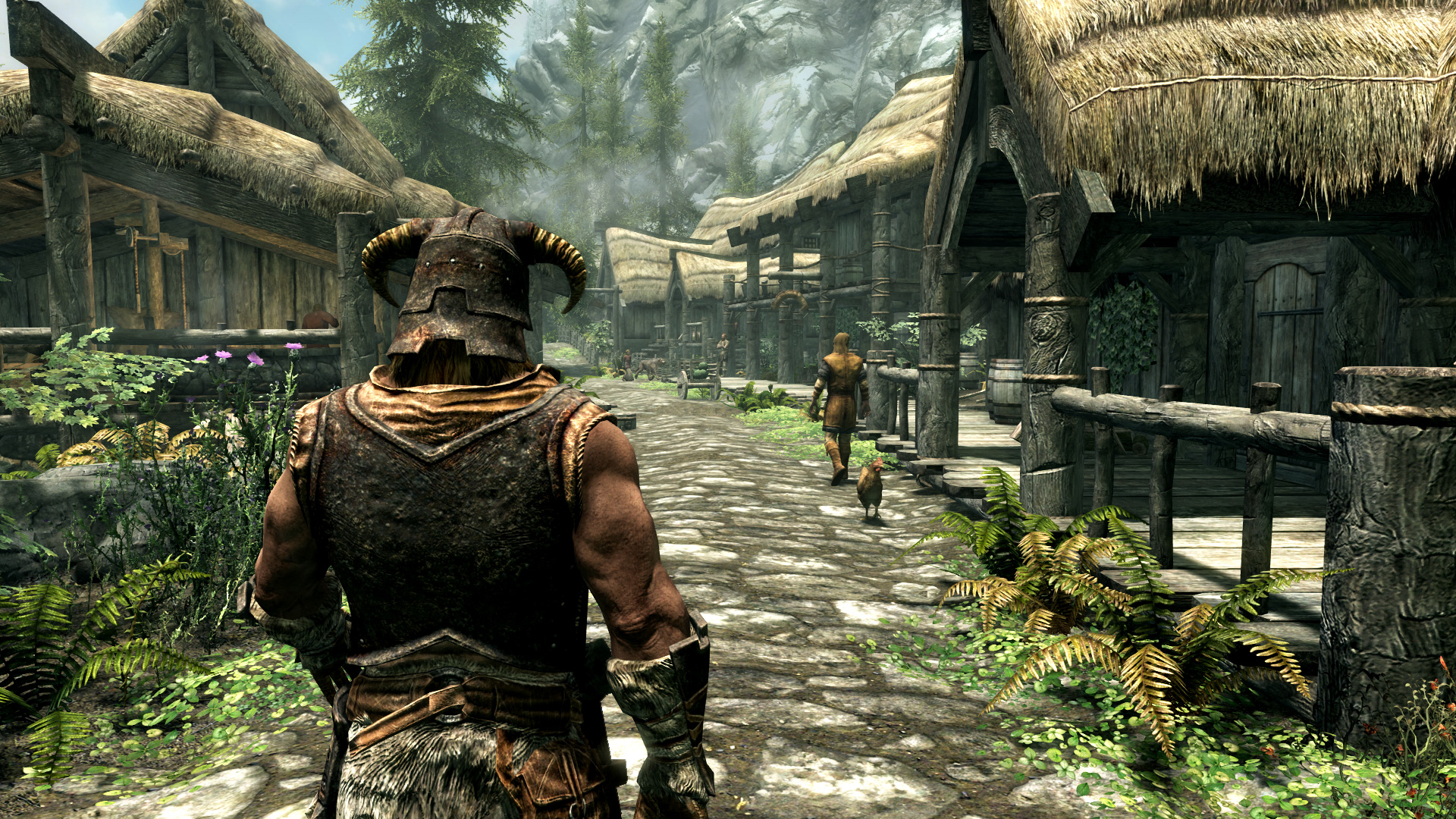
Bethesda
Sky-ram
Yet, most open worlds really just aren’t that good. It really isn’t that fun to go into a new massive world—that you’ll never fully experience—for the fourth, fifth, twentieth time. It never stops being cool, but the fun factor becomes increasingly fleeting. Assassin’s Creed has become the infamous poster series for using the same repetitive system of “open world with big towers you climb and three sidequests that are disguised as a thousand”. The formula has become manufactured and stale. Games have to try extra hard to be unique and engaging with their worlds because once you’ve seen a few huge fields with trees and rocks and monsters in them, you’ve seen them all.
While not every game can be Breath of the Wild and reignite the flame of the genre, I think there is one overlooked element that, when handled correctly, largely determines how fun a world is to explore: the map. I’m talking about the map in the menu or the mini-map in the corner, not the map as in the world itself; I’ve found that a good map system can make or break an open world and almost single-handedly determines how fun a game’s exploration can be.
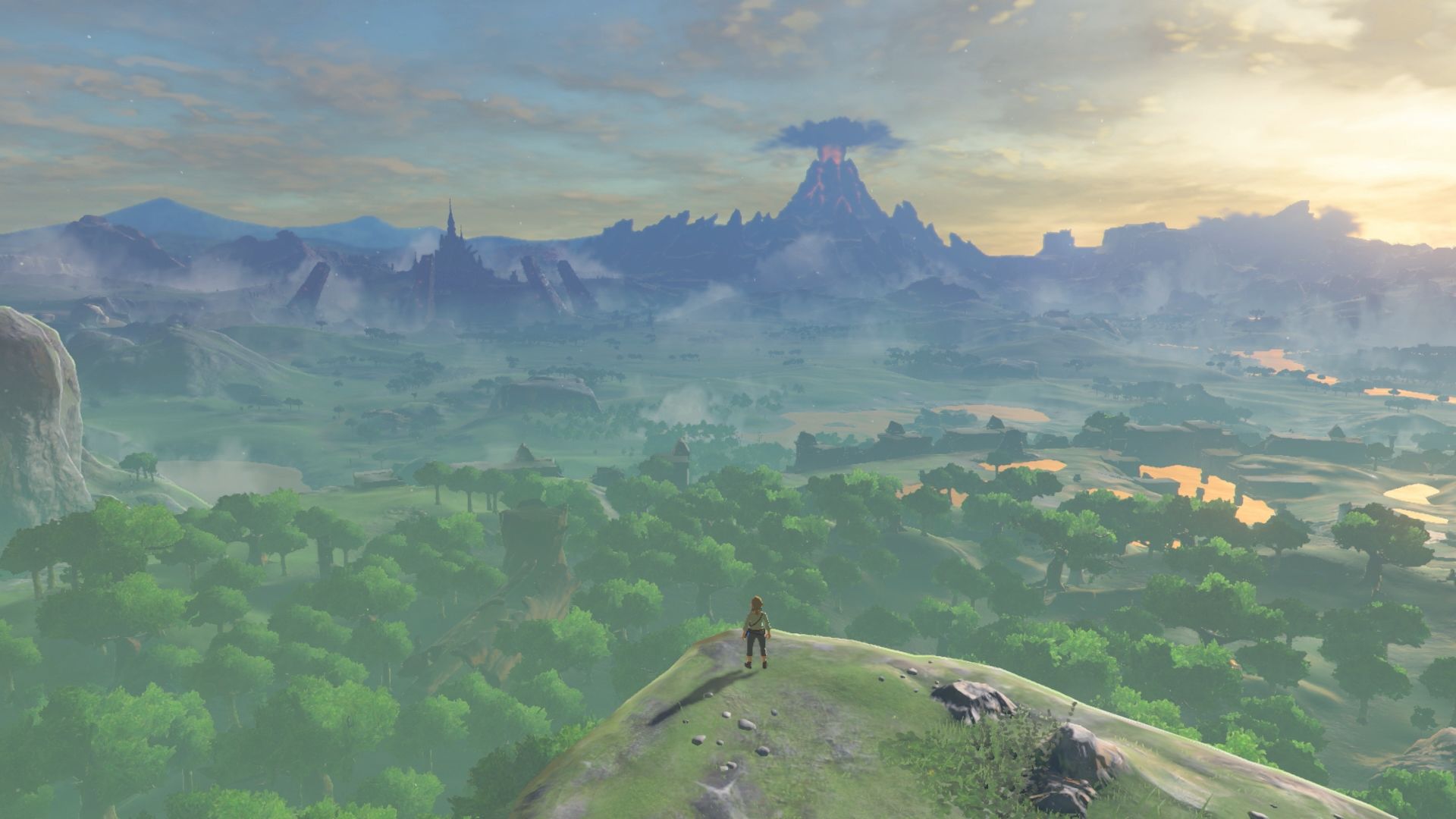
Nintendo
Open your eyes
There are a few elements around the map interface that have to also be considered, the world design, objectives in the world, how the world is navigated, weight placed on exploration, level of map detail, and so much more that varies completely based on the game. So many genres have maps in them now, so there is no one-size-fits-all solution, but some are better than others.
The largest issue created by having a mini-map display on the screen is the increasingly common complaint after every new open world releases: your eyes get locked on the little map and you completely ignore the magnificent world presented around you. Instead of listening to the world-building cues of interesting landmark-based directions, it's so much easier to watch the little dot follow the arrow in the corner. Some players will just turn off the map on the UI to better immerse themselves, but that’s not a good solution. Because not every game is designed to be playable without the on-screen guidance, if you are starting a new game blind, there’s no indication that it would be better played with altered settings. I would absolutely say this is the biggest issue plaguing open-world games, and it is the problem that is solved by the best instances of the genre. Let’s look at a few games to figure out what they do right and wrong with their maps.
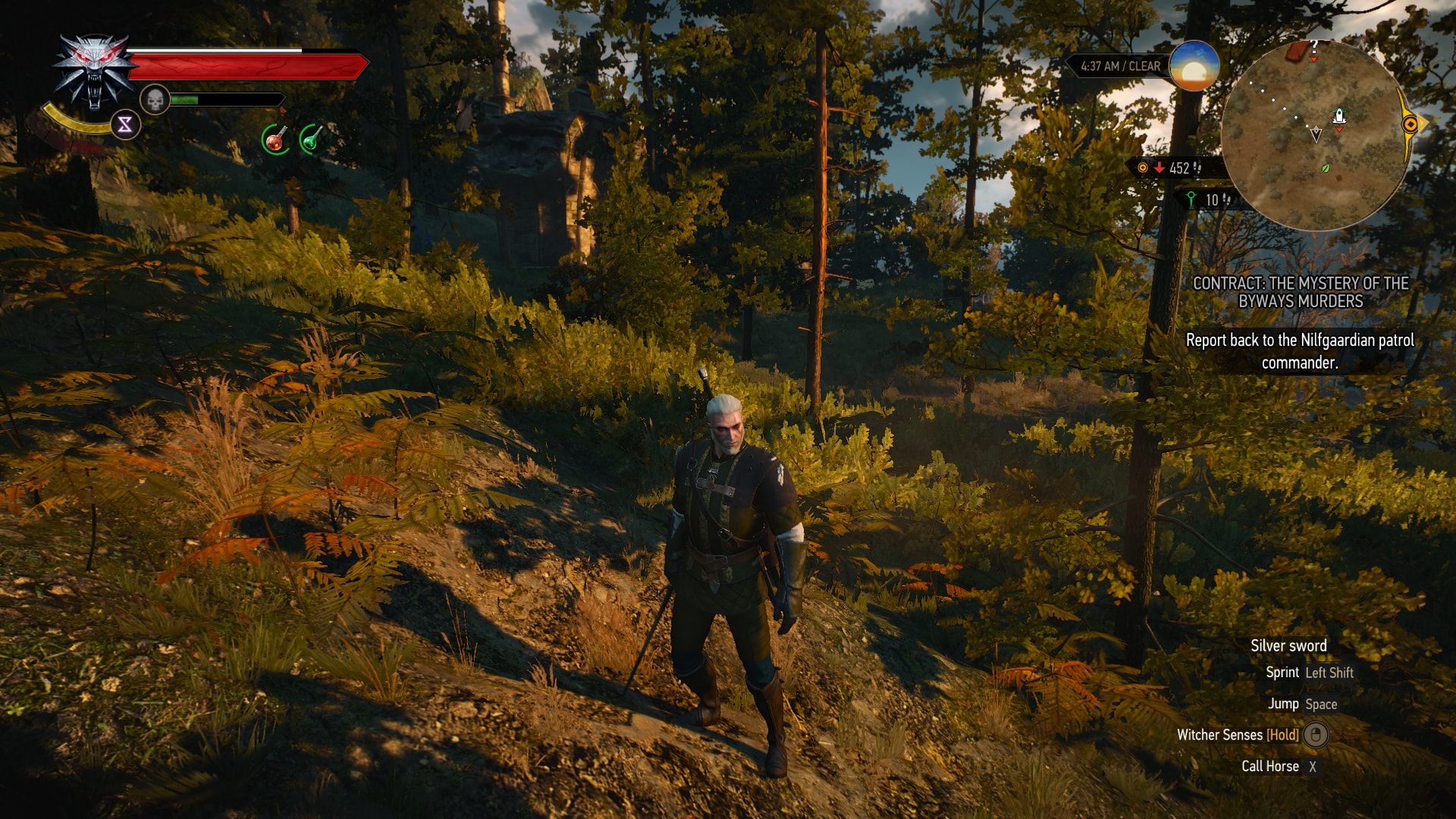
CD Projekt
Witcher man
The Witcher 3 is a landmark in open worlds, it is vast, beautiful, and really just silly big. The mini-map display is locked to one zoom level, gives specific lined paths guiding between points, and gives a detailed look at the surroundings. Among maps, I would give this one the “Okay” rating. It works, but it might work too well. The guiding line between destinations, ensuring you never get lost, is good, but it is a crutch for bad game design. Yes, it is optional, and the game is playable without the displayed map, but it turns into a massively different game without it. This might be a good thing for some, it lets you dive into the world and learn it by trial and error, but that is certainly not for everybody. This is an average overall map because it is perfectly usable, but takes away from the world in small ways; the continents are just too big and not navigable enough to warrant roaming without the map. The Witcher is a good place to start here, because it shows each of the elements in play to an extreme. Let’s consider the pillars to be Level of detail and the amount of visual information that the map gives away about the world. Witcher shows you fully everything—too much. Next is Navigation or the ease, efficiency, and balance of discovery that the mechanic provides. This game shows you exactly where you need to go and the primary navigation is walking, with no further mechanics. Finally World Design, the analysis of how interesting, inviting, explorable, and fun the world itself is. Using this, we can exactly determine what the best video game map is from the few select video games I have chosen… right?
Outer Wilds is the exploration genre taken to its limit, and it barely has a map. The only overlay map in Outer Wilds is a globe that shows your relative position to the poles. This is Level of detail at the bottom end, there’s basically no information given about the surroundings. While this sounds bad, it encourages exploring on your own, like turning off the map in The Witcher, but actually designed with it in mind. The full menu map in Outer Wilds is also obtuse, just showing relative position in the solar system. It once again encourages the player to explore on their own, without making them completely blind and without pulling your focus away from the world. It’s the perfect implementation for a game like Outer Wilds, but having low level of detail won’t work for every game. I’ll give this one my official “good” map rating, not even touching on the Navigation and World Design, because I’d be spoiling a game that you need to play blind.
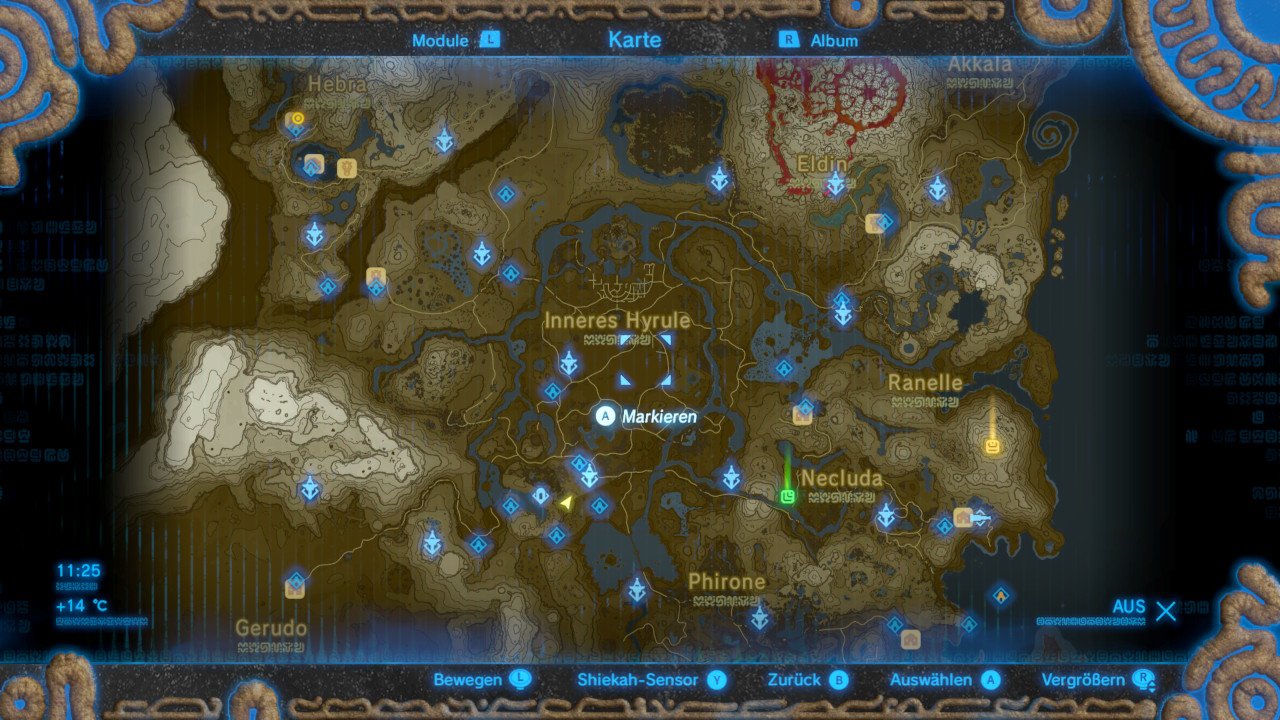
Nintendo
This is it, friend
Now the elephant in the room, Breath of the Wild. Oh Breath of the Wild you magnificent, offensively breathtaking game. As most are aware by now, the latest Zelda game was the first open world title in the series, and many lauded it as perfecting the genre during a time where open-worlds had just entered the stale zone. What does it do so right? Luckily, our awesome pillars can answer this question. Navigation is seamless, mountains aren’t an obstacle, they are an opportunity, cliffs aren’t an invisible wall, they are an opening. Climbing, running, gliding, it is all seamless. Because of this, it can get away without having a dotted line guiding between quests and only having a directional marker. You can go straight in the direction of the marker, no matter what, because of the navigational tools at Link’s disposal. Mountains won’t push you away from your path, potentially getting lost, you can climb right up them and then, what’s that, oh look: a shrine, a few korok seeds, and two hours spent on walking a three minute distance. This ties into the World Design, because of Zelda’s visual simplicity, interesting things stand out and entice the player, and the world is stuffed with them. The Witcher is also stuffed with random elements in the world, be it bandit camps, monster caves, treasure areas, and much more. But it doesn’t draw attention in the same way as a shrine or a korok puzzle. While both it and Zelda have gorgeous vistas, Breath of the Wild’s world design simply feels better and more engaging because of Link’s traversal tools. Lastly, the maps featured also excel at balancing level of detail. The topographical display doesn’t spoil too much of the surroundings, but it doesn’t leave the player in the dark either. Things show up after they are discovered, not before, making exploration have a subconscious tangible reward beyond the joy of finding and gaining cool stuff. This is an “Amazing” map, and games taking cues from the title will further refine the genre.
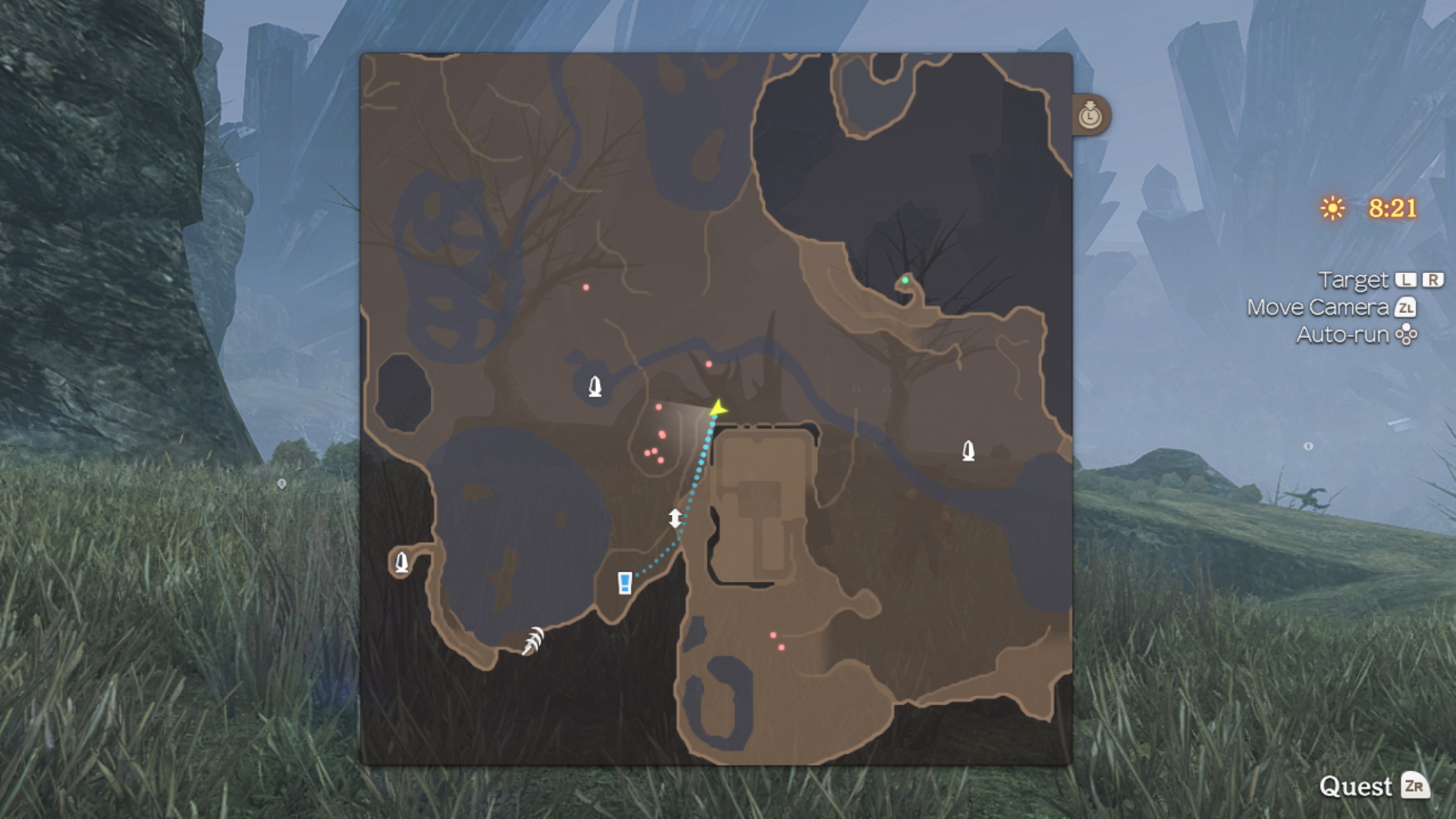
Nintendo
Overlay maps are good
Finally, on the niche-ish end, the Xenoblade Chronicles series. Playing these titles is what inspired me to bring up this topic that had been spurring in my mind for years. The recent remaster of the first Xenoblade Chronicles completely changed the original Wii map by adding navigational lines for quests on the map, which wasn’t even present in 2017’s Xenoblade Chronicles 2. Both of these worlds are top-tier World Design, with the Xenoblade series basically unparalleled in its unique landscapes. This does occasionally act as a fault, with the lack of climbing and navigation mechanics similar to Zelda, the world is more vague to navigate without the guiding lines present in XC1. You might say “git gud,” and you’re right, but it really just brings back to the issue of staring at the minimap guide rather than consuming the world. XC2 doesn’t have the guiding lines, it just has a really bad compass display, and half the time there is no straight path to the next destination so you have to wander around for yourself until you find it. It feels outdated, seeming like it needs the guiding path, but the helper line is still a mediocre solution.
I don’t know what the best solution to this problem is. I’d say just make every game as fun to traverse as Breath of the Wild, but in some games it really doesn’t make sense to be climbing up the mountains. For Xenoblade Chronicles which is largely a point to point narrative with optional exploration, the guiding line works fine because you don’t get lost in frustration. It is just the same with The Witcher. I think it’s important that games with big worlds consider exploration first and make sure having that world is a benefit rather than a detriment. The map shouldn’t feel like an afterthought to make up for a difficult to navigate, but well-made, world. Thanks to Breath of the Wild, I think games are trying new things and advancements in technology are opening up for new opportunities. The same base formula of a ‘difficult to navigate without map assistance’ world isn’t fun when you isolate it from the scenic landscapes and engaging stories, so most games could be better if they picked up the weaker portion of the gameplay.
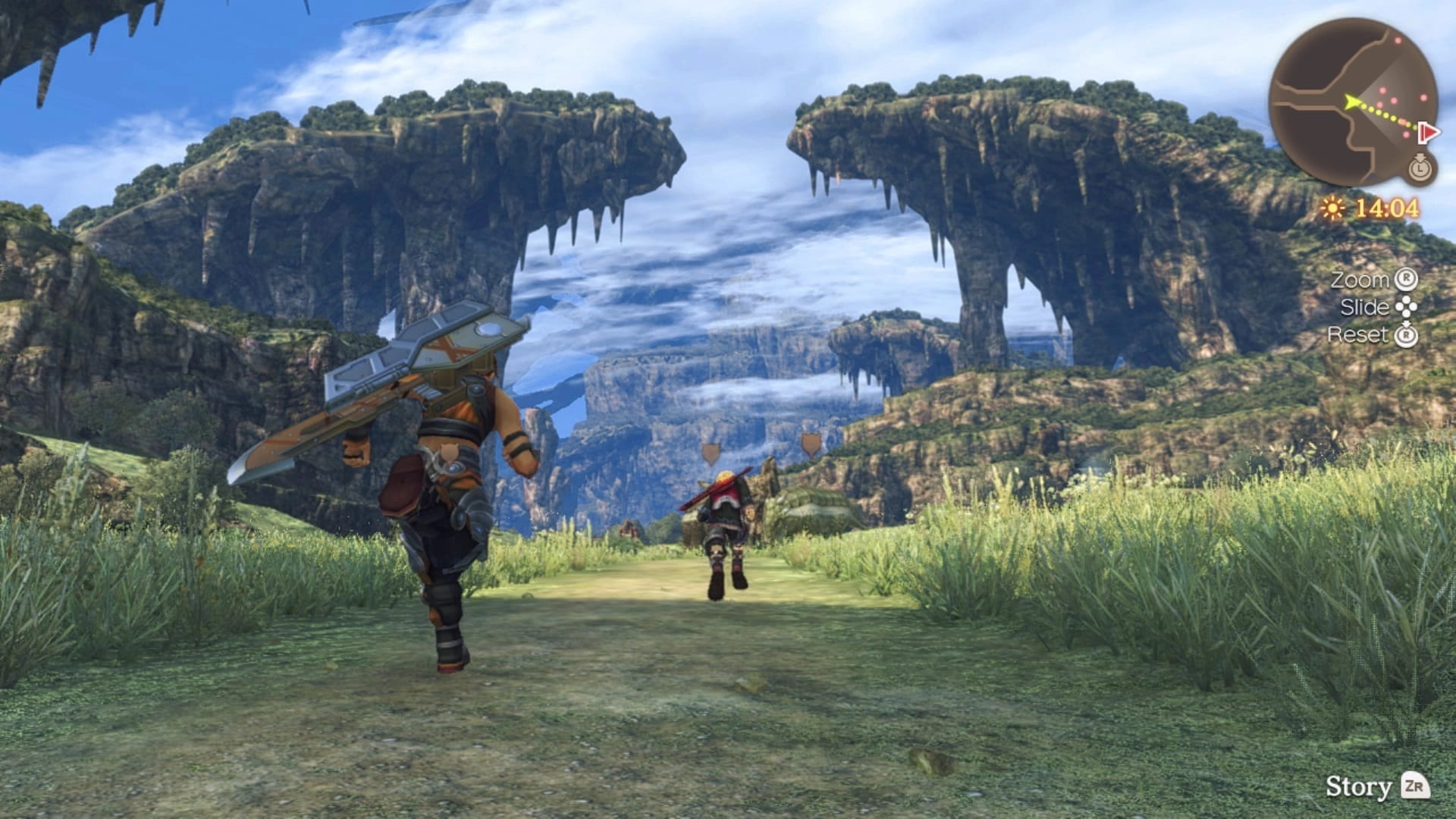
Nintendo
Gaur Plains
Please don’t come to me and say, “yeah but what about this games, Caden? It has a good map too!” I went this whole article without saying ‘Dragon Quest’ so we can all learn a little something from my expert restraint.

Comments